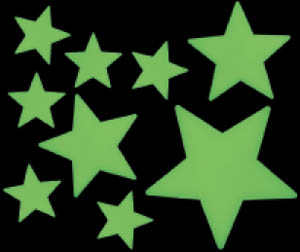 |
LITR 4328 American Renaissance Research Posts 2015 (research post assignment) Research Post 2 |
 |
Nathan Mesloh
5-4-15
Transformation of Gothic Literature
This second
research post is a continuation of my previous post where I explored the origins
of gothic literature. This one will examine how the style of writing has evolved
overtime, specifically from the publication of The Castle of Otranto,
which is considered the first gothic novel.
The Castle of
Otranto was published in 1764, and told the story of a young woman who was
attempting to flee from an evil man who lusted after her. It takes place in a
dark old castle in a foreign land, which have become classic icons of gothic
literature. From here one of the next major novels is The Monk by Matthew
Lewis in 1796 (bbc.co.uk).
This novel was considered gothic because of how it featured incestuous
necrophilia, matricide, cannibalism, and even more dark aspects of humans that
would be considered horrifying on many levels to a majority of mankind (bbc.co.uk).
As it stands in the late 1700s gothic literature focuses on the darkness within
humans, unknown places, and dark castles.
The genre shifts
again in 1816 with the publication of The Vampyre and Frankenstein.
The first is the first English written vampire story, written by John Polidori,
and the second written by Mary Shelley which tells the tale of a mad scientist
creating life from dead tissue. Both of these were written in the same night, in
the same location in a contest of who could write the better ghost story (publicdomainreview.org).
The modern vampire story is a very common one in todays age, with recent series
such as Twilight, Underworld, True Blood, and many others. These
novels have made a serious change in the gothic literature in that they brought
in a new element, which is the supernatural beings of the vampire, or
Frankensteinís monster. While previously it was the darkness of men, it has now
transformed into something new.
There was not
much time between these and when Gothic Literature changed yet again, with the
publications of Poeís previously unpublished short stories in 1860 (bbc.co.uk).
Poe changed the face of Gothic literature even more, by creating a new element.
He would have all of the previous aspects of gothic literature mentioned, but in
addition to that he introduced the concept of psychological horror. In addition
to this, Poe took the setting of the dark faraway castle, and put his settings
into ones readers could relate to such as a home in The Telltale Heart,
or a school in William Wilson (poemuseum.org).
In some cases, Poe would use the classic dark old abandoned castle, but even
when he did he did not make that his primary focus, but instead the psychology
of his characters (poemuseum.org).
The next and final major
change I will examine happened in 1896, where the first gothic film was created.
This film was a French film titled Le Manoir Du Diable, translating to The
Devilís Castle (filmsite.org).
The film lasted only 2 minutes, and showed many elements of the Gothic, with
bats flying, a castle, a demonic figure, and other elements. After this film,
many others began to appear over time, which would lead to a mass of horror
movies.
To conclude this
research post, the gothic novel began with focusing on the darkness of mankind,
and old castles in faraway lands. It then changed with the publication of
Dracula and Frankenstein to add in the supernatural beings. After
these Poe added in the element of psychological horror and making the settings
in everyday places. Finally, the first gothic film was created, which while a
brief 2 minutes, it would lead to inspire many other films to be created. Gothic
literature started out with simple key elements and expanded into much more,
molding what it is today.
Works
Cited
BBC
News. BBC, n.d. Web. 04 May 2015. <http://www.bbc.co.uk/timelines/
zyp72hv#zqwrcdm>.
"Horror Films." Horror Films. N.p., n.d. Web. 04 May 2015. <http://www.filmsite.org/
horrorfilms.html>.
"The
Poet, the Physician and the Birth of the Modern Vampire." The Public Domain
Review.
N.p., n.d. Web.
04 May 2015. <http://publicdomainreview.org/2014/10/16/the-poet-the-
physician-and-the-birth-of-the-modern-vampire/>.
"Teachers." Teachers. N.p., n.d. Web. 04 May 2015. <https://www.poemuseum.org/teachers-
poes-literary.php>.
"Terms & Themes." Terms & Themes. N.p., n.d. Web. 04 May 2015. <http://coursesite.uhcl.edu/
HSH/Whitec/terms/G/gothic.htm>.
 |
 |
 |